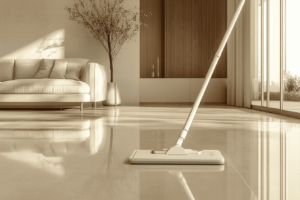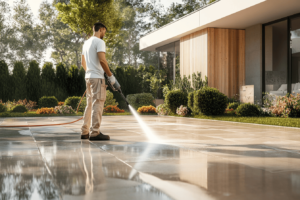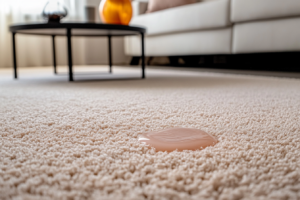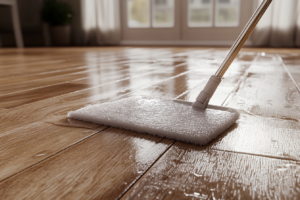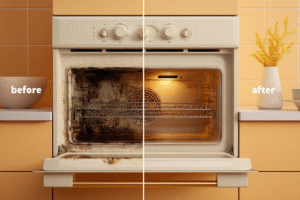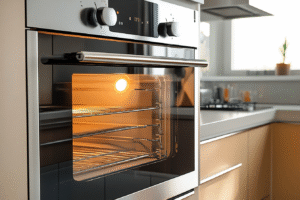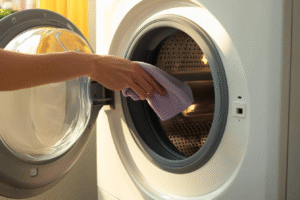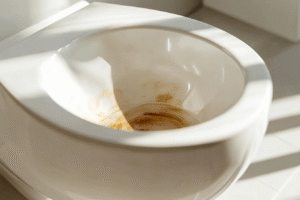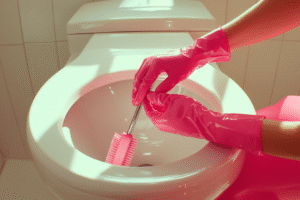Cleaning your tile grout makes such a difference to the overall cleanliness of a room – but it can be tough to get that grout looking as good as new!
That’s why we consulted our expert team of professional domestic cleaners, who can get your grout sparkling new in no time.
Here’s how to clean tile grout like a pro for best results!
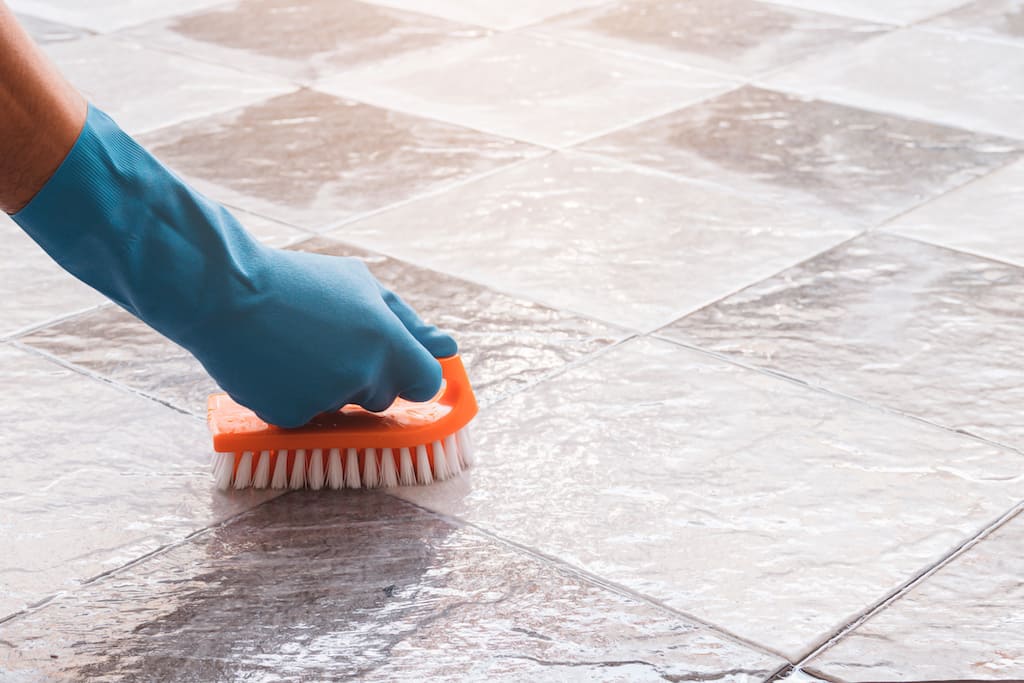
Understanding Different Types of Grout Before Cleaning
One of the first steps to clean tile grouting is to understand the materials you’re working with. There are a few different types of tile grout, and they require different approaches.
Here are some of the most common types of grout, and how to identify what yours is.
Sanded vs. Unsanded Grout
Sanded and unsanded grout are both cement-based mixtures used to fill the gaps between tiles in various installations, such as flooring, walls, and countertops.
They look pretty similar, but the main difference between them lies in the size of the aggregate particles they contain.
Sanded grout is called so because it contains a mixture of cement, sand, and water. The sand particles make this grout stronger and more durable, so it’s often used for wider and thicker grout lines in flooring and countertops.
Unsanded grout is – you guessed it – grout without sand. The texture is finer and smoother, and is more commonly used on vertical surfaces like walls, or when the tiles are glass or marble. This is because scratching would damage those materials, so you don’t want abrasive sand around those!
Epoxy Grout
One other common option is epoxy grout; a material made of epoxy resin and filler powder which is used as a hardener.
Epoxy grout is a great waterproof option that’s also resistant to stains and spills, so you’ll often find it in wet areas like showers or swimming pools. You’ll be able to identify it by its smooth slick appearance.
Preparing to Clean Tile Grout
Before you clean tile grout, it’s important to identify what material you’re working with so you can gather the appropriate materials.
Soft bristle brushes are generally considered safe for most types of grouting, but be sure to keep an eye out for any damage or abrasion as you work.
You should also protect yourself with rubber gloves, and plastic goggles to avoid splashes back in your eyes and work in a well-ventilated space.
Some chemical cleaning products contain harsh ingredients and you want to avoid any damage!
To prep your grout for cleaning, make sure you’ve swept and vacuumed the area to remove any debris, and give the area a spray-and-wipe or mop to remove surface-level dirt.
Now, let’s begin…
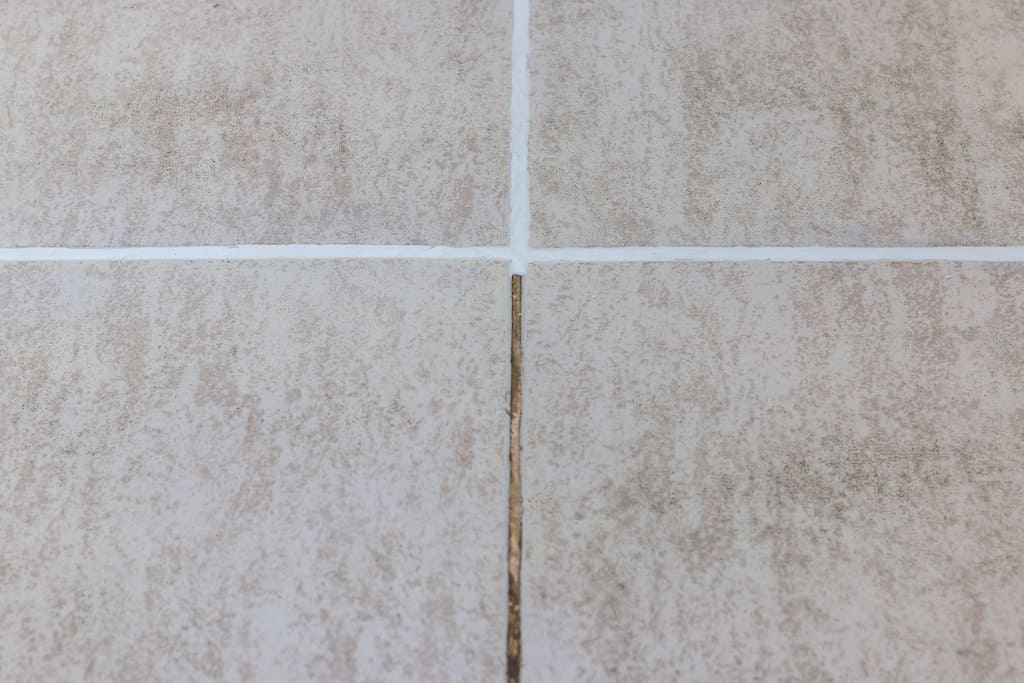
8 Effective Methods for Cleaning Tile Grout
Here are eight safe and effective options for getting your tile grout nice and clean!
Warm Water and Brush Scrubbing
This may seem obvious, but it’s a classic for a reason! You’d be surprised at how much dirt a simple mix of warm water and mild soap can remove.
Apply warm soapy water to the tiled areas, and gently scrub with a soft bristled brush to remove visible discolouration.
Vinegar and Water Solution
Vinegar is a versatile household cleaner, and tile grout is no exception! Simply mix equal parts vinegar and water, spray onto your grout, and let soak for 5-10 minutes before scrubbing with a soft-bristled brush.
Baking Soda Paste and Vinegar
Baking soda can turbo-charge the cleansing properties of vinegar, so add it to your arsenal.
For this method, mix baking soda and vinegar into a paste then apply to the grout lines. Let soak for 10 minutes or so, then scrub and wipe clean. Your grout should appear noticeably brighter and cleaner.
Hydrogen Peroxide Application
Opt for 3% hydrogen peroxide, and spray it onto your grout, making sure that it’s saturated. Let it sit for 10 minutes to really eradicate any mould or mildew, then scrub clean and rinse.
Oxygen Bleach for Deep Cleaning
Oxygen bleach often comes in the form of a powder, so mix it with water as per the included instructions. Pour or spray it onto the grout lines, then let it sit for as long as the instructions recommend – which is normally 15-30 minutes.
Scrub with your handy brush, wipe clean, and rinse off any traces thoroughly.
Commercial Grout Stain Removers
Look for a high-quality tile grout cleaner, which may come in the form of a spray, gel, or liquid.
These will also normally come with specific instructions, so be sure to follow all guidelines for safe use and don’t combine them with other cleaning products to avoid unwanted chemical reactions.
Steam Cleaning for Stubborn Stains
A steam cleaner is a device that you fill with water to generate steam, which can be used to clean tile grout. Each device will operate differently, but be sure to move it slowly across the grouting so the steam can really penetrate.
Chlorine Bleach Usage
You’ll need to dilute the chlorine bleach with equal parts water, and apply with a sponge, brush, or spray bottle. Let the solution sit, scrub gently, then rinse thoroughly to avoid traces of the chlorine bleach lingering.
Essential Tips for Grout Maintenance
It’s important to clean your grout regularly to avoid any mould, mildew, or stains from accumulating.
Be sure to wipe or mop up any spills quickly, try to keep the grouted surfaces dry, and use a dehumidifier if you’re in a humid environment.
And if you worry that your tile grout needs a bit more TLC than you can offer, don’t forget you can always enlist the help of a professional cleaner through Wecasa!


